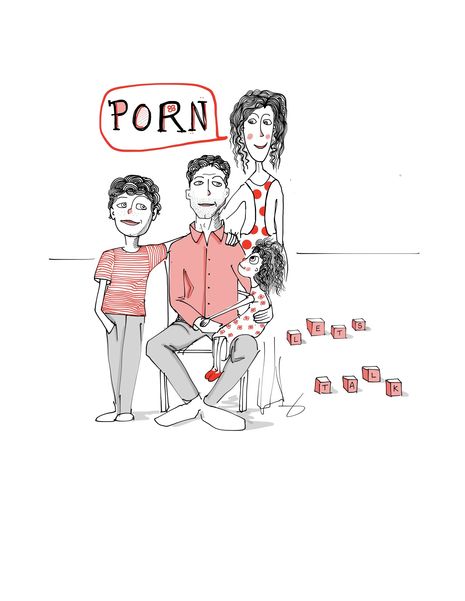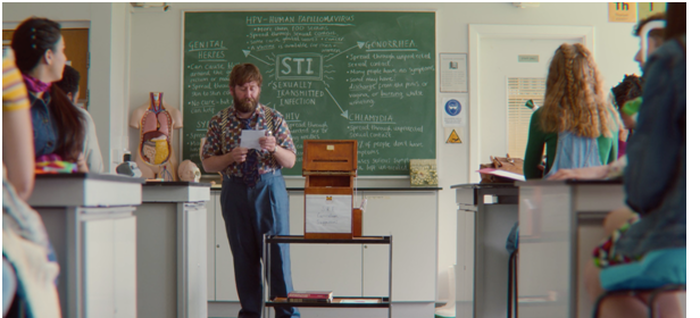We need to talk about porn
Isobel Duxfield argues that the stigma surrounding pornography should be confronted and that young people need to be spoken to about sex and the consumption of porn in an open, healthy way.

Young people’s pornography habits have long preoccupied policymakers and the national media. The latest report to make headlines is the British Board of Film Classification’s (BBFC) survey of adolescent viewing habits, which reveals that more than half of 11-13-year olds have seen pornographic material, a figure that rises to 66% for the 14-15 age category.
The BBFC’s investigation joins multiple studies into the demography of porn audiences, charting the growth in young viewers streaming explicit online content. Last year a BBC survey revealed 77% of young men admitted to streaming X-rated content within the previous month. Studies like this regularly provoke panic, with headlines like “Pornography ‘one click away’ from young children,” stirring outrage and terror over young people’s internet history. While this anxiety is warranted, the current responses are counterproductive.
Porn is big business. Thanks to cheap and portable internet-enabled technology, the industry has ballooned since the early days of kinky rags like Playboy and Hustler. Typing “porn” into a Google search yields more than two billion websites in 0.33 seconds. Today, explicit sites receive more traffic than Netflix, Amazon and Twitter combined, with Pornhub claiming to stream 75GB of data every second. Although the industry’s financial status is highly contested, most estimates exceed $6bn.
“Rather than botched regulation or feigned ignorance, we need to talk about porn”
The accessibility, volume and nature of much pornographic content poses serious concerns for gender equality and healthy sexual relationships. For over 50 years, feminist and anti-porn activists have rallied against the publication of explicit imagery, rejecting porn’s glorification of sexual violence against women and destructive masculinity. As feminist activist and Women Against Pornography (WAP) co-founder, Susan Brownmiller asserts, pornography transforms women into “adult toys,” fostering the rape cultures we have seen in recent high profile harassment cases across the #MeToo movement.
For some, the solution is not less pornography, but more. Several feminist projects have produced liberating, autonomy affirming porn, with content which centres the actors’ agency and pleasure. Indeed, the Feminist Porn Awards honour the erotic narratives challenging stereotypes and fostering positive sexual role models. However, while this healthier pornographic material is to be celebrated, it remains a niche market that barely makes a dent in the global industry.
Others have tried to regulate the problem away. In a recent attempt to control audiences, the UK government announced an age-verification block, prohibiting minors from viewing pornographic material on the web. However, the scheme quickly fell apart when the practicalities of policing this enormous and diffuse industry became clear. To the embarrassment of security providers, The Guardian managed to penetrate the firewall in a matter of minutes. By October last year this proposed regulation had been abandoned.
Technological fixes are clearly not the solution. Rather than prompting more regulation, the BBFC’s survey reveals the need for healthier conversations around pornography. Adolescent audiences are repeatedly regarded as being “exposed” to pornography, with reports claiming children “stumble” across explicit material. Framing viewing habits as non-intentional or deviant ignores the reality of pornography in the lives of people across the world, preventing young people from discussing their experiences. The BBFC’s study displays this clear lack of communication. 75% of parents did not believe their children watched adult material, yet the majority of their children admitted to doing so. Furthermore – and arguably even more distressingly – most assumed that if their daughters had viewed porn, it was accidental.
We urgently need open and honest dialogues which do not simply condemn watching pornography but discuss the ethics of the industry and its repercussions for consent and gender equality in a safe space. This begins with better sex education. When schools still address intercourse as a mechanical, heterosexual act, is it any wonder that over 50% of young men are using explicit material as their primary authority on intercourse?
It is even harder for young gay, lesbian or bisexual individuals, for whom sub-par sex education leaves porn as one of the only sources for understanding their sexuality. “As a gay man, sex education in school didn’t address any of my concerns, it was actually porn which allowed me to explore my body and relationships with other men”, reflects one student. The curriculum must go beyond providing advice on avoiding pregnancy and STIs and towards sex-positive education, which discusses pornography as part of a syllabus that foregrounds explorations of sexuality and indeed the pleasure of intercourse – particularly for women.
Luckily, it seems like change is afoot. The UK government has announced a new sex education curriculum, which, from September, mandates lessons on online safety, female genital mutilation and confronting homophobia. However, recent protests over LGBTQ+ equality teaching shows implementing this is easier said than done. “It is often difficult for teachers to navigate these lessons,” said Nick Baily, an ex-teacher, now Education and Development Masters student at St Edmund’s College, Cambridge. “We need to support the fantastic work of external professionals coming into schools to teach on sex and relationships.”
Porn is not likely to disappear any time soon. If expanding audiences over the last few years are a barometer for what is to come, pornography will continue to be a major force in young peoples’ lives, probably with technology that we cannot even currently comprehend. Rather than botched regulation or feigned ignorance, we need to talk about porn.
 News / Cambridge bus strikes continue into new year16 January 2026
News / Cambridge bus strikes continue into new year16 January 2026 News / Local business in trademark battle with Uni over use of ‘Cambridge’17 January 2026
News / Local business in trademark battle with Uni over use of ‘Cambridge’17 January 2026 Interviews / The Cambridge Cupid: what’s the secret to a great date?14 January 2026
Interviews / The Cambridge Cupid: what’s the secret to a great date?14 January 2026 News / Uni members slam ‘totalitarian’ recommendation to stop vet course 15 January 2026
News / Uni members slam ‘totalitarian’ recommendation to stop vet course 15 January 2026 Science / Why smart students keep failing to quit smoking15 January 2026
Science / Why smart students keep failing to quit smoking15 January 2026










